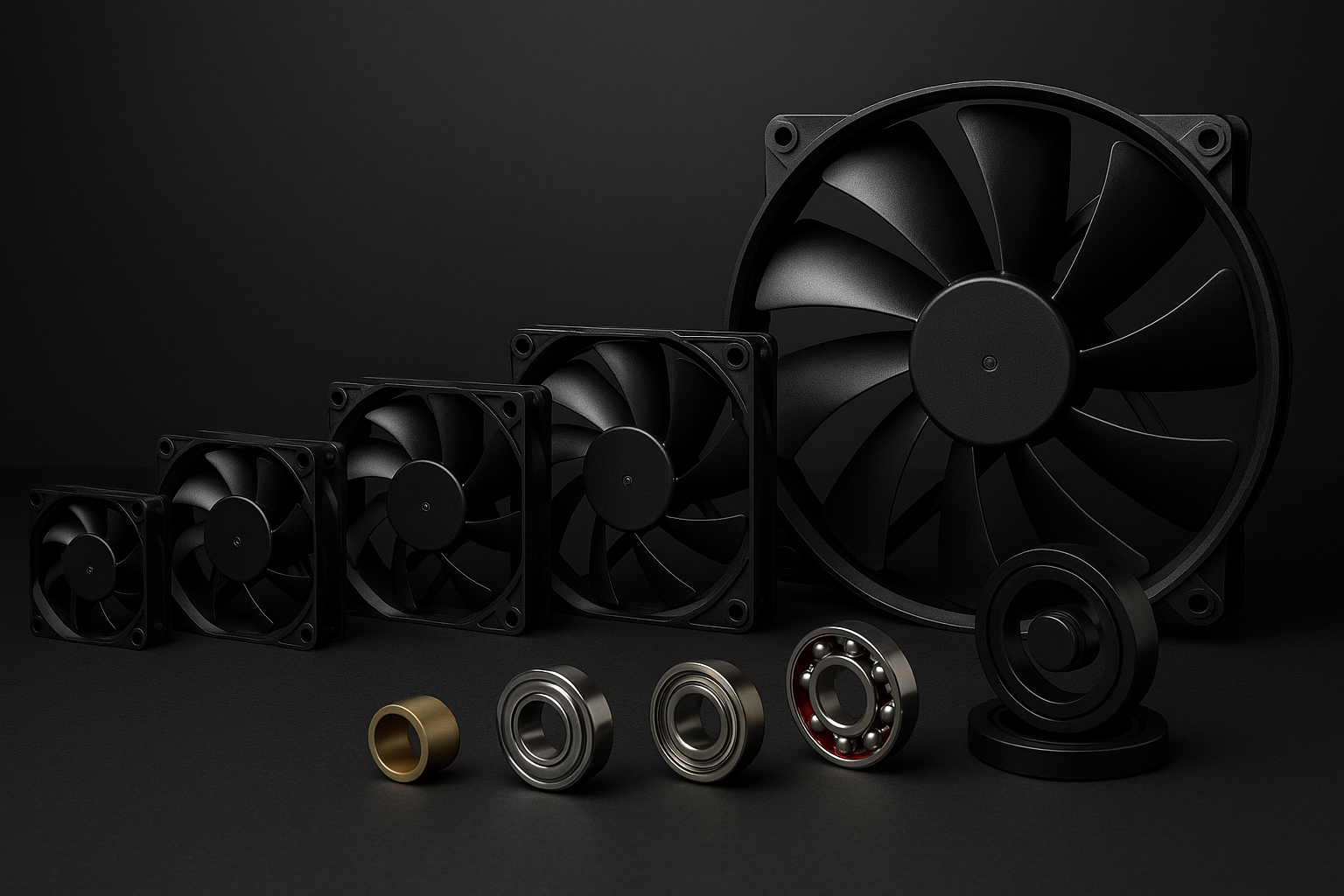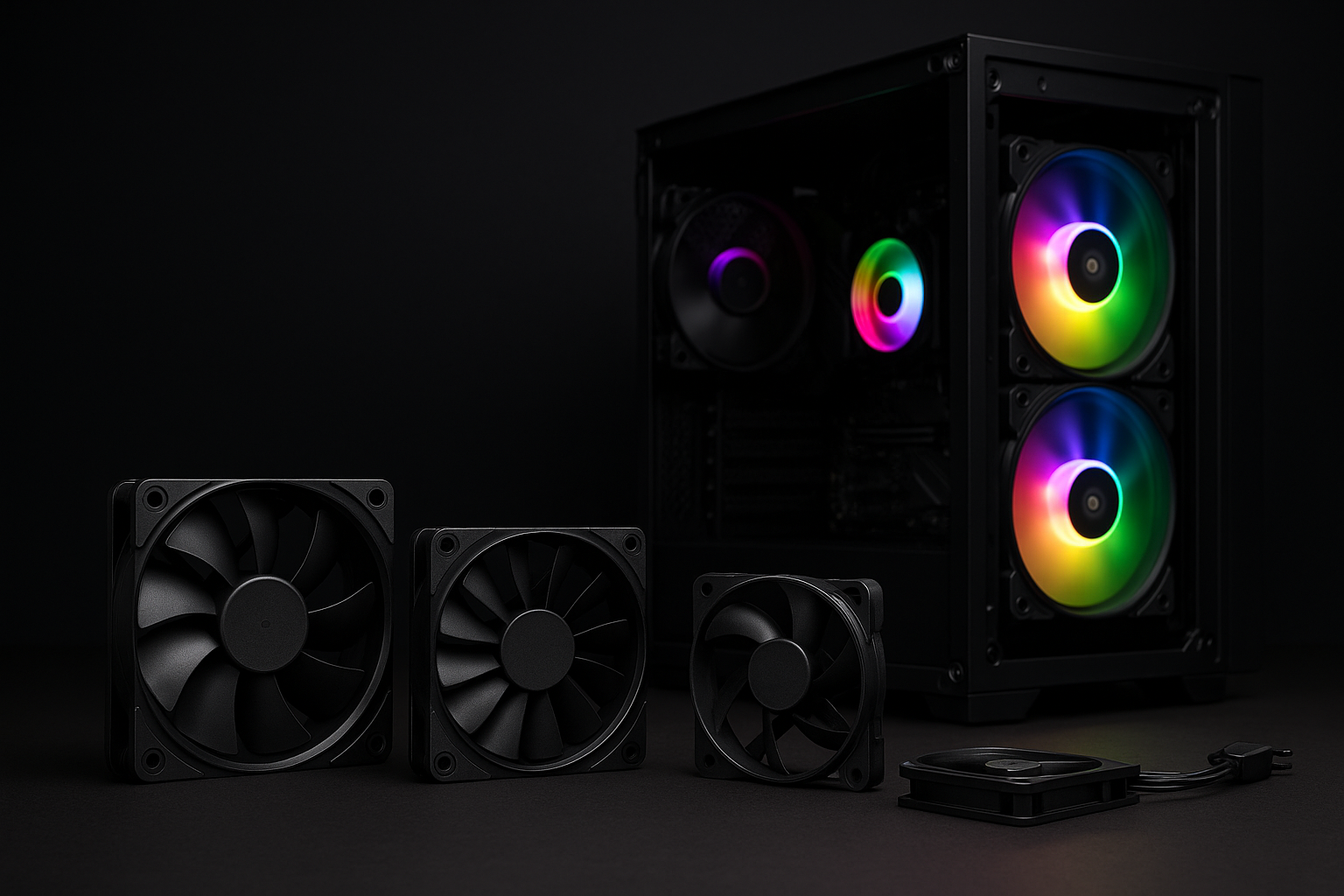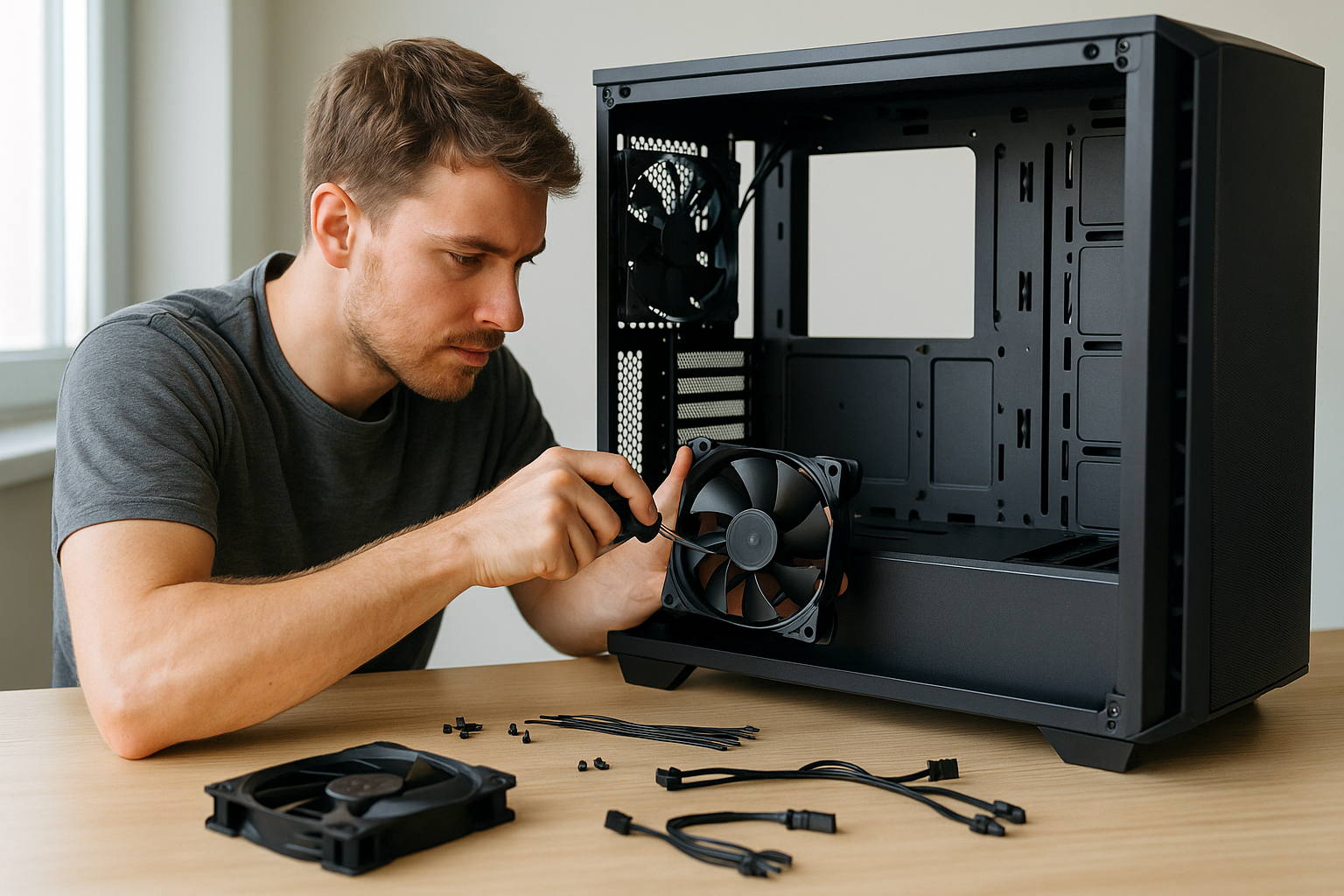- Blog
Fan Sizes & Bearing Types | Q&A

Table of Contents
ToggleWhat fan sizes and thicknesses are most common?
-
Sizes: 80, 92, 120, 140, 180, 200 mm (120/140 mm are the mainstream).
-
Standard thickness: 25 mm.
-
Variants: 15–17 mm slim (space-constrained builds) and 30–38 mm thick (higher pressure, better against obstructions—space permitting).
Does a bigger fan always cool better?
-
At the same RPM, larger fans usually move more air and can be quieter for a given airflow target.
-
Real results still depend on case openings, filters, grills, and RPM control. Ensure your case supports the size you pick.
Which fan size is best for each use?
| Size (mm) | Typical thickness | Typical use cases |
|---|---|---|
| 80 | 25 | Very small cases; spot cooling for add-in cards/boards |
| 92 | 25 | Narrow cases, legacy HDD bays, older cases |
| 120 | 25 | Most common for front/rear case fans and many CPU coolers |
| 140 | 25 / 38 | High-airflow or low-noise goals; case fans or radiators (when supported) |
| 180 / 200 | 25 | Large cases; high airflow at low RPM / silence-focused intakes |
When should I use slim (15–17 mm) or thick (30–38 mm) fans?
-
Slim (15–17 mm): for tight clearances—ITX/SFF, shallow top/bottom mounts, interference near GPUs/PSUs. Expect somewhat lower airflow/pressure.
-
Thick (30–38 mm): where space allows and you need extra static pressure (radiators, dense grills/filters).
How do bearing types compare?
| Bearing | Typical lifespan* | Characteristics & best use |
|---|---|---|
| Sleeve (oil-sleeve) | ~5,000–15,000 h | Lowest cost, very quiet when new; wears faster (oil migration), noise rises over time. Budget builds, light duty. |
| Hydro / FDB (fluid-dynamic) | ~40,000 h | Lubricated fluid dynamics improve durability and stability; quiet + long-running. Common in mid/high-end case/radiator fans. |
| Ball (dual-ball) | ~50,000–100,000 h | Very durable and heat-tolerant; tends to be noisier. Good for high-temp or 24/7 operation. (Single-ball hybrids ~40,000 h.) |
| MagLev (magnetic-levitation) | ~50,000 h+ | Rotor is magnetically suspended (minimal friction): very quiet, thermally robust, long life; typically higher price. |
*Manufacturer ratings vary by model and operating conditions.
Which bearing should I choose?
-
Max longevity / tougher environments: Dual-ball or MagLev.
-
Best all-round balance (silence + life): Hydro/FDB (the mainstream sweet spot).
-
Lowest upfront cost / short duty: Sleeve (accept faster wear).
Any quick selection tips?
-
Pair size to case support and noise goals (140 mm if possible; 120 mm for universal fit).
-
Use slim fans only where clearance demands; use thick fans when you need extra pressure.
-
Match bearing to duty cycle and noise target (FDB/MagLev for quiet 24/7 use).
-
Always check filters/grills—they dictate whether you need pressure-oriented models.





